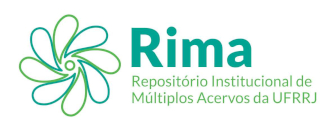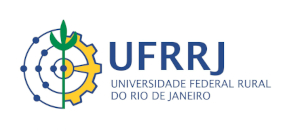Please use this identifier to cite or link to this item:
https://rima.ufrrj.br/jspui/handle/20.500.14407/9011Full metadata record
| DC Field | Value | Language |
|---|---|---|
| dc.contributor.author | Macedo, Pietro Menezes Sanchez | |
| dc.date.accessioned | 2023-12-21T18:33:27Z | - |
| dc.date.available | 2023-12-21T18:33:27Z | - |
| dc.date.issued | 2022-02-23 | |
| dc.identifier.citation | MACEDO, Pietro Menezes Sanchez. Erosão hídrica sob chuva simulada com variação instantânea de intensidade de precipitação e avaliação automática da enxurrada. 2022. 70 f. Tese (Doutorado em Agronomia - Ciências do Solo) - Instituto de Agronomia, Universidade Federal Rural do Rio de Janeiro, Seropédica, RJ, 2022. | por |
| dc.identifier.uri | https://rima.ufrrj.br/jspui/handle/20.500.14407/9011 | - |
| dc.description.abstract | A erosão hídrica é um fenômeno natural de grande importância no cenário global no que diz respeito à conservação e exploração sustentável do solo e da água, e o uso de simuladores de chuvas tem gerado inúmeras informações relevantes para a compreensão desse tema. O aprimoramento desses equipamentos visando a aplicação de chuvas com variação de intensidade de precipitação e o desenvolvimento de um coletor eletrônico de enxurrada são etapas cruciais no estudo dos processos erosivos. Partindo do pressuposto que vairar a rotação do simulador de chuvas possibilitaria o controle das intensidades de precipitação aplicadas durante as simulações e que um coletor automático de enxurrada facilitaria a obtenção de dados em campo desenvolvemos a tese em três capítulos de maneira a abordar todo o procedimento adotado no desenvolvimento e avaliação dos dispositivos associados ao simulador de chuvas InfiAsper. O objetivo do primeiro capítulo foi avaliar se a variação na rotação do disco obturador, associada à sua abertura, possibilita a obtenção de diferentes padrões de chuva no simulador de chuva InfiAsper. A instalação de componentes eletrônicos no painel de controle do simulador permitiu a variação da rotação do obturador durante sua operação de acordo com programação prévia, possibilitando a simulação de chuvas com diferentes padrões de precipitação. Eventos com picos de intensidade de precipitação (IP) de 110 mm h-1 e duração de 40 min foram adequadamente simuladas pelo equipamento, com uniformidade de aplicação acima de 75%. Com esse dispositivo tornou-se possível simular outros padrões de chuva, com IP e duração diferentes, alterando as configurações para o ensaio desejado. O segundo capítulo teve como objetivo avaliar a operacionalidade do simulador de chuva InfiAsper com o novo painel de controle que varia a intensidade de precipitação durante a aplicação da chuva e as perdas de solo e água associadas a diferentes padrões de chuva em um Argissolo Distrófico com textura franco-argilosa. O painel foi programado para simular chuvas de 40 min de duração e lâmina total de 30 mm em um terreno com declividade de 0,09 m m-1, gradeado no sentido da curva de nível e em condição de solo exposto. Operando com o novo painel de controle, o InfiAsper funcionou satisfatoriamente permitindo variar a intensidade das chuvas, confome as características das chuvas esperadas nos eventos naturais. Padrões de chuvas intermediário e atrasado produziram maiores perdas de solo e água do que o padrão avançado. Os padrões de chuva intermediário invertido e constante não produziram perdas significativas para a aplicação de lâmina d'água média de 30 mm. No terceiro capítulo é apresentado o desenvolvimento e a avaliação em campo de um coletor de dados para simuladores de chuva, capaz de quantificar o volume de enxurrada e estimar a taxa de perda de solo automaticamente. Utilizando um microcontrolador (Arduino Mega® 2560), foram testados sensores com princípios capacitivo, ultrassônico e por pressão, para computar o volume de enxurrada, e um turbidímetro, para computar as taxas de perda de solo. Os sensores foram selecionados quanto à calibração e incerteza dos dados. O coletor automático de enxurrada equipado com o transdutor de pressão PSI.420 e o sensor de turbidez ST100 se mostrou eficaz na obtenção e armazenamento de dados de volume de enxurrada e perda de solo obtidos durante ensaio de chuva simulada em campo. | por |
| dc.description.sponsorship | CAPES - Coordenação de Aperfeiçoamento de Pessoal de Nível Superior | por |
| dc.description.sponsorship | CNPq - Conselho Nacional de Desenvolvimento Científico e Tecnológico | por |
| dc.format | application/pdf | * |
| dc.language | por | por |
| dc.publisher | Universidade Federal Rural do Rio de Janeiro | por |
| dc.rights | Acesso Aberto | por |
| dc.subject | Simulador de chuva. | por |
| dc.subject | Arduino | por |
| dc.subject | Padrões de precipitação. | por |
| dc.subject | Coletor de enxurrada | por |
| dc.subject | Rainfall simulator | por |
| dc.subject | Precipitation patterns | por |
| dc.subject | Flood collector | por |
| dc.title | Erosão hídrica sob chuva simulada com variação instantânea de intensidade de precipitação e avaliação automática da enxurrada | por |
| dc.title.alternative | Water erosion under simulated rainfall with instantaneous variation of precipitation intensity and automatic runoff assessment | eng |
| dc.type | Tese | por |
| dc.description.abstractOther | Water erosion is a natural phenomenon of great importance in the global scenario with regard to the conservation and sustainable exploration of soil and water, and the use of rainfall simulators has generated a lot of relevant information for the understanding of this topic. The improvement of these equipments aiming at the application of rains with variation of precipitation intensity and the development of an electronic runoff collector are crucial steps in the study of erosive processes. Assuming that changing the rotation of the rainfall simulator would make it possible to control the precipitation intensities applied during the simulations and that an automatic runoff collector would facilitate the collection of data in the field, we developed the thesis in three chapters in order to approach the entire procedure adopted in the development and evaluation of devices associated with the InfiAsper rainfall simulator. The aim of the first chapter was to evaluate whether the variation in the shutter disc rotation, associated with its aperture, makes it possible to obtain different rainfall patterns in the InfiAsper rainfall simulator. The installation of electronic components in the simulator's control panel allowed the variation of the shutter rotation during its operation according to previous programming, allowing the simulation of rains with different precipitation patterns. Events with peak precipitation intensity (PI) of 110 mm h-1 and duration of 40 min were adequately simulated by the equipment, with application uniformity above 75%. With this device it became possible to simulate other rain patterns, with different PI and duration, changing the settings for the desired test. The second chapter aimed to evaluate the operability of the InfiAsper rainfall simulator with the new control panel that varies the intensity of precipitation during the application of rain and the soil and water losses associated with different rainfall patterns in a Dystrophic Acrisol with texture clay loam. The panel was programmed to simulate rainfall of 40 min duration and a total depth of 30 mm in a terrain with a slope of 0,09 m m-1, graded in the direction of the contour and in an exposed soil condition. Operating with the new control panel, InfiAsper worked satisfactorily, allowing to vary the intensity of the rains, according to the characteristics of the rains expected in natural events. Intermediate and late rainfall patterns produced greater soil and water losses than the advanced pattern. The intermediate inverted and constant rainfall patterns did’t produce significant losses for the application of an average water depth of 30 mm. The third chapter presents the development and field evaluation of a data collector for rainfall simulators, capable of quantifying runoff volume and automatically estimating the rate of soil loss. Using a microcontroller (Arduino Mega® 2560), sensors with capacitive, ultrasonic and pressure principles were tested to compute runoff volume, and a turbidimeter to compute soil loss rates. Sensors were selected for calibration and data uncertainty. The automatic runoff collector equipped with the PSI.420 pressure transducer and the ST100 turbidity sensor proved to be effective in obtaining and storing data on runoff volume and soil loss obtained during a simulated rain test in the field. | eng |
| dc.contributor.advisor1 | Carvalho, Daniel Fonseca de | |
| dc.contributor.advisor1ID | 627.403.266-53 | por |
| dc.contributor.advisor1Lattes | http://lattes.cnpq.br/4871187664578422 | por |
| dc.contributor.advisor-co1 | Shultz, Nivaldo | |
| dc.contributor.advisor-co2 | Pinto, Marinaldo Ferreira | |
| dc.contributor.referee1 | Carvalho, Daniel Fonseca de | |
| dc.contributor.referee2 | Pereira, Marcos Gervasio | |
| dc.contributor.referee3 | Salvador, Conan Ayade | |
| dc.contributor.referee4 | Panachuki, Elói | |
| dc.contributor.referee5 | Oliveira, Paulo Tarso Sanches de | |
| dc.creator.ID | 112.091.177-03 | por |
| dc.creator.ID | https://orcid.org/0000-0002-2341-7154 | por |
| dc.creator.Lattes | http://lattes.cnpq.br/1710413394787926 | por |
| dc.publisher.country | Brasil | por |
| dc.publisher.department | Instituto de Agronomia | por |
| dc.publisher.initials | UFRRJ | por |
| dc.publisher.program | Programa de Pós-Graduação em Agronomia - Ciência do Solo | por |
| dc.relation.references | AKSOY, H.; UNAL, N. E.; COKGOR, S.; GEDIKLI, A.; YOON, J.; KOCA, K.; INCI, B.; ERIS, E. A rainfall simulator for laboratory-scale assessment of rainfall-runoff-sediment transport processes over a two-dimensional flume. Catena, v.98, p.63-72, 2012. https://doi.org/10.1016/j.catena.2012.06.009. ALMEIDA, W. S.; CARVALHO, D. F.; PEREIRA, F. A. C.; ROUWS, J. R. C. Sediment production and soil water infiltration under different simulated rainfall characteristics. Revista Brasileira de Engenharia Agrícola e Ambiental, v.23, n.8, p.572-578, 2019. http://dx.doi.org/10.1590/1807-1929/agriambi.v23n8p572-578. ALMEIDA, W. S.; PANACHUKI, E.; OLIVEIRA, P. T. S.; MENEZES, R. S.; ALVES SOBRINHO, T., CARVALHO, D. F. Effect of soil tillage and vegetal cover on soil water infiltration. Soil & Tillage Research, v.175, p.130-138, 2018. https://doi.org/10.1016/j.still.2017.07.009. ALMEIDA, W. S.; SEITZ, S.; OLIVEIRA, L. F. C.; CARVALHO, D. F.; Duration and intensity of rainfall events with the same erosivity change sediment yield and runoff rates. International Soil and Water Conservation Research. v.9, n.1, p.69-75, 2021. https://doi.org/10.1016/j.iswcr.2020.10.004. ALVES SOBRINHO, T.; GOMEZ-MACPHERSON, H., G´OMEZ, J. A. A portable integrated rainfall and overland flow Simulator. Soil Use and Management, v.24, n.2, p.163–170, 2008. https://doi. org/10.1111/j.1475-2743.2008.00150.x. ANACHE, J. A. A.; BACCHI, C. G.; ALVES SOBRINHO, T. Modeling of (R) USLE Cfactor for pasture as a function of Normalized Difference Vegetation Index. European International Journal of Science and Technology, v.3, n.9, 2014. 2304-9693. ASSIS, K. G. O.; SILVA, Y. J. A. B.; LOPES, J. W. B.; MEDEIROS, J. C.; TEIXEIRA, M. P. R.; RIMÁ, F. B.; SINGH, V. P.; Soil loss and sediment yield in a perennial catchment in southwest Piauí, Brazil. Environ Monit Assess, v.26, n.193, 2021. https://doi.org/10.1007/s10661-020-08789-y. BAUCKE, A. S.; FERRARI, J. C.; MICHEL, G. P.; GOETTEN, W. J. Descarga sólida do rio Itajaí do Sul mediante a aplicação do método simplificado de Colby. Revista Gestão & Sustentabilidade Ambiental, v. 9, n. 4, p. 297-315, 2020. http://dx.doi.org/10.19177/rgsa.v9e42020297-315. CERDÀ, A.; ACKERMANN, O.; TEROL, E.; RODRIGO-COMINO, J. Impact of Farmland Abandonment on Water Resources and Soil Conservation in Citrus Plantations in Eastern Spain. Water, v.11, n.4, 2019. https://doi.org/10.3390/w11040824. CHAN, K.; SCHILLEREFF, D. N.; BAAS, A. C. W.; CHADWICK, M. A.; MAIN, B.; MULLIGAN, M.; O’SHEA, F. T.; PEARCE, R.; SMITH, T. W. L.; SOESBERGEN, A. V.; TEBBS, E.; THOMPSON, J. Low-cost electronic sensors for environmental research: Pitfalls and opportunities. Progress in Physical Geography, v.45, p.1-34, 2020. https://doi.org/10.1177/0309133320956567. DELETIC, A. Sediment transport in urban runoff over grassed areas. Journal of Hydrology, v.301, p.108-122, 2005. https://doi.org/10.1016/j.jhydrol.2004.06.023. FERRAZ, L. L.; LIMA, F. A.; GUEDES, U. L.; SILVA, F. G. C.; ROCHA, F. A. Estimativa da descarga de sedimentos transportados na bacia hidrográfica do rio Verruga. Agarian Academy, v.5, n.9, p.224-233, 2018. https://doi.org/10.18677/Agrarian_Academy_2018a23. GIPPEL, C. J. The use of turbidimeters in suspended sediment research. Hydrobiologia, v.176, n.177, p.465-480, 1989. http://dx.doi.org/10.1007/BF00026582. GRANDO, D. L.; GATIBONI, L. C.; DALL'ORSOLETTA, D. J.; SCHMITT, D. E.; MUMBACH, G. L.; SOUZA JUNIOR, A. A.; BRIGNOLI, F. M. Development and validation of a siphoning prototype for surface runoff evaluation. Journal of Environmental Quality, v.50, n.5, p.1246-1253, 2021. https://doi.org/10.1002/jeq2.20266. ISERLOH, T., RIES, J.B., ARNÁEZ, J., BOIX-FAYOS, C., BUTZEN. V., CERDÀ, A., ECHEVERRÍA M.T., FERNÁNDEZ-GÁLVEZ, J., FISTER, W., GEIßLER, C., GÓMEZ, J.A., GÓMEZ-MACPHERSON, H., KUHN, N.J., LÁZAROJ, R., LEÓN, F.J., MARTÍNEZMENA, M., MARTÍNEZ-MURILLO, J.F., MARZEN, M., WIRTZ, S., 2013. European small portable rainfall simulators: A comparison of rainfall characteristics. Catena. v. 110, p. 100-112. https://doi.org/10.1016/j.catena.2013.05.013. KUMAR, G.; SENA, D. R.; PATRA, S.; SINGH, D.; KUROTHE, R. S.; MISHRA, P. K.; NYONAND. Design and Development of a Low-Cost Automatic Runoff Sampler for Time Distributed Sampling. Journal of Hydrology, v.592, 2021. https://doi.org/10.1016/j.jhydrol.2020.125845. LANDERS, M. N.; STURM, T. W. Hysteresis in suspended sediment to turbidity relations due to changing particle size distributions. Water Resources Research, v. 49, n. 9, p. 5487-5500, 2013. https://doi.org/10.1002/wrcr.20394. MACEDO, P. M. S., PINTO, M. F., ALVES SOBRINHO, T., SCHULTZ, N., COUTINHO, T. A. R., CARVALHO, D. F. A Modified portable rainfall simulator for soil erosion assessment under different rainfall patterns. Journal of Hydrology, 2021. https://doi.org/10.1016/j.jhydrol.2021.126052. MERTEN, G. H.; CAPEL. P. D.; MINELLA, J. P. G. Effects of suspended sediment concentration and grain size on three optical turbidity sensors. Journal Soils Sediments, v.14, p.1235-1241, 2014. https://doi.org/10.1007/s11368-013-0813-0. NIELSEN, K. T.; MOLDRUP, P.; THORNDAHL, S.; NIELSEN, J. E.; DUUS, L. B.; RASMUSSEN, S. H.; UGGERBY, M.; RASMUSSEN, M. R. Automated rainfall simulator for variable rainfall on urban green areas. Hydrological Processes, v.33, p.3364-3377, 2019. https://doi.org/10.1002/hyp.13563. MUTTER, G. M. The Use of Portable Turbidity Meters in Developing an Erodibility Classification System for Iraqi Soils. International Journal of Scientific Research in Science, Engineering and Technology, v.4, n.1, p.1107-1117, 2018. PANACHUKI, E.; SANTOS, M. A. N.; PAVEL, D. S.; ALVES SOBRINHO, T.; CAMACHO, M. A.; MONTANARI, R. Soil and water loss in Ultisol of the Cerrado-Pantanal Ecotone under different management systems. African Journal of Agricultural Research, v. 10, n. 0, p. 926-932, 2015. https://doi.org/10.5897/AJAR2014.8908. QUEIROZ, T. M.; LIMA, S. C. R. V.; BOTREL, T. A.; FRIZZONE, J. A. Coletor automático para ensaio de aspersores em laboratório (1) – desenvolvimento do modelo. Revista Brasileira de Agricultura Irrigada v.2, n.1, p.24–28, 2008. https://doi.org/10.7127/rbai.v2n100200. SÁ, A. B.; PIGOZZO FILHO, V. C.; TADRIST, L. PASSOS, J. C. Experimental study of a linear Fresnel concentrator: A new procedure for optical and heat losses characterization. Energy, v.232, 2021. https://doi.org/10.1016/j.energy.2021.121019. SALEM H. M.; MESELHY, A. A. A portable rainfall simulator to evaluate the factors affecting soil erosion in the northwestern coastal zone of Egypt. Natural Hazards, v. 105, p. 2937–2955, 2020. https://doi.org/10.1007/s11069-020-04432-8. SANTOS, C. A.; FRIGO, E. P.; FRIGO, K. D. A.; ECKERT, C. T.; DIETER, J.; ALVES, H. J.; TOKURA, L. K.; SANTOS, R. F. Impact of pervious pavement in urban areas on catchment basin recovery. Ciências Agrárias, v.39, n.1, p.39-49, 2018. https://doi.org/10.5433/1679-0359.2018v39n1p39. SCHENATO, L.; LÓPEZ, J. P. A.; GALTAROSSA, A.; PASUTO, A.; BOGAARD, T.; PALMIERI, L. Design and field testing of a fiber optic pressure sensor for underground water level monitoring. European Workshop on Optical Fiber Sensors, v.111990J, 2019. https://doi.org/10.1117/12.2540812. SEITZ, S.; GOEBES, P.; PUERTA, V. L.; PEREIRA, E. I. P.; WITTWER, R.; SIX, J.; VAN DER HEIJDEN, M. G. A.; SCHOLTEN, T. Conservation tillage and organic farming reduce soil erosion. Agronomy for Sustainable Development, v.39, n.4, 2019. https://doi.org/10.1007/s13593-018-0545-z. XU, X.; FAN, H.; CHEN, X.; MI, C. Estimating low eroded sediment concentrations by turbidity and spectral characteristics based on a laboratory experiment. Environmental monitoring and assessment, v. 192, n. 2, p. 1-13, 2020. https://doi.org/10.1007/s10661-020-8092-x. ZHAN, X.; ZHAO, J.; ZHU-BARKER, X.; SHUI, J.; LIU, B.; GUO, M.; An instrument with constant volume approach for in situ measurement of surface runoff and suspended sediment concentration. Water Resources Research, v. 57, 2021. https://doi.org/10.1029/2020WR028210. | por |
| dc.subject.cnpq | Agronomia | por |
| dc.thumbnail.url | https://tede.ufrrj.br/retrieve/70987/2022%20-%20Pietro%20Menezes%20Sanchez%20Macedo.pdf.jpg | * |
| dc.originais.uri | https://tede.ufrrj.br/jspui/handle/jspui/6048 | |
| dc.originais.provenance | Submitted by Jorge Silva (jorgelmsilva@ufrrj.br) on 2022-10-07T17:05:46Z No. of bitstreams: 1 2022 - Pietro Menezes Sanchez Macedo.pdf: 2335356 bytes, checksum: 0b8b5d7437283d3e0f3e68246fef5e0f (MD5) | eng |
| dc.originais.provenance | Made available in DSpace on 2022-10-07T17:05:46Z (GMT). No. of bitstreams: 1 2022 - Pietro Menezes Sanchez Macedo.pdf: 2335356 bytes, checksum: 0b8b5d7437283d3e0f3e68246fef5e0f (MD5) Previous issue date: 2022-02-23 | eng |
| Appears in Collections: | Doutorado em Agronomia - Ciência do Solo | |
Se for cadastrado no RIMA, poderá receber informações por email.
Se ainda não tem uma conta, cadastre-se aqui!
Files in This Item:
| File | Description | Size | Format | |
|---|---|---|---|---|
| 2022 - Pietro Menezes Sanchez Macedo.pdf | 2.28 MB | Adobe PDF |  View/Open |
Items in DSpace are protected by copyright, with all rights reserved, unless otherwise indicated.

